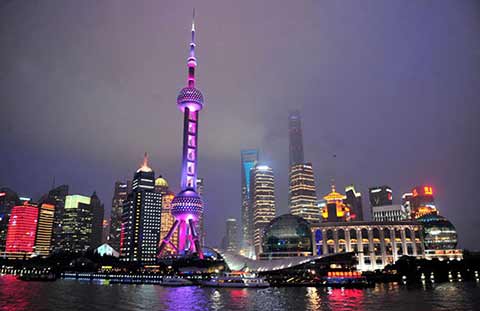Restaurant business: Competitive market offers opportunities and challenges
By Jack Chuang (chinadaily.com.cn) Updated: 2016-05-30 09:30
 |
|
A woman walks past a Pizz Hut advertisement in Shanghai, March 11, 2005. [Photo / IC] |
China's restaurant market is more vibrant than ever and is home to close to 8 million foodservice points of sale and dozens of unique local cuisines. The industry's growth is outstripping other major markets and showing extraordinary resilience in a time of declining GDP growth.
According to the China Cuisine Association statistics, China's catering service market grew by 11.7 percent from a year earlier to reach 3.23 trillion yuan ($490.9 billion) in 2015.
The country's middle class, with annual household incomes of between $9,000 and $34,000, has grown explosively and now accounts for 68 percent of all urban households. The increase in disposable income has meant that consumers now eat out more frequently.
The arrival and rapid expansion of international chains in the past few years has increased the competitiveness of the market. Despite heightened curiosity and receptiveness, getting a consumer to visit your restaurant still represents a significant challenge.
Fortunately, the strong performance of international chains proves that success is achievable for foreign players. They just need to know to how to capture the hearts of clients.
The consumers are becoming more sophisticated, which has led to the arrival of new concepts. They actively seek out new restaurants and are receptive to new formats and concepts such as new theme, healthy lifestyle menus and organic produce, as well as innovative fusion cuisine.
Over 80 percent of Chinese with a monthly household income of 20,000 yuan ($3,049) or above agree that they actively seek out new restaurants and enjoy eating out at modern, casual place. Eighty percent of the same group also has a high propensity to spend more for a nicer restaurant to indulge or reward themselves.
In addition, consumers like to dine out to celebrate special occasions. Restaurants need to be aware of and sensitive to these differences in dining missions/occasions in order to succeed. They are willing to pay three times more for a celebratory or special occasion than for casual day-to-day dining, which offers opportunities for restaurants to launch special menus with higher prices and capture additional revenue.
In terms of the reputation of specific brands in China, Haidilao is perceived as the most reputable, followed by Pizza Hut and Little Sheep. McDonald's (7), TGI Friday's (8) and KFC (9) are the Western brands ranked in the top 10, demonstrating the extent to which foreign brands play a significant role in the market.
According to a recent study of OC&C Strategy Consultants, service quality, variety of choice and race to innovate are three critical factors for consumers, while service speed, convenience and pricing are rated as less important.
As cities continue to modernize, smaller traditional points of sale diminish, presenting restaurant chains with an opportunity to capture even more growth. The full potential of restaurant chains is far from being reached in China.
Looking forward, restaurant chains are likely to continue gaining market share, leveraging brand recognition, experience sharing, buying power and extensive support networks. The strong performance of international chains, ranging from fast food restaurants such as Pizza Hut, to casual dining chains such as TGI Friday's, signals that success is achievable for foreign players.
International chains should not be deterred by fierce competition.
The author is a partner of Greater China, OC&C Strategy Consultants. The views do not necessarily reflect those of China Daily.
- Chinese yuan weakens to 5-year low
- AIIB's top team ready, mulls investment strategies
- Wanda opens theme park to rival Disney
- Energy cooperation 'backbone' of Russia-China economic ties
- SW China city uses big data for smart policing
- UAE's Abu Dhabi Ports seek lures Chinese businessmen
- China's bad loans rise, risk under control: Regulator
- Mopan Network bets on intelligent manufacturing
















